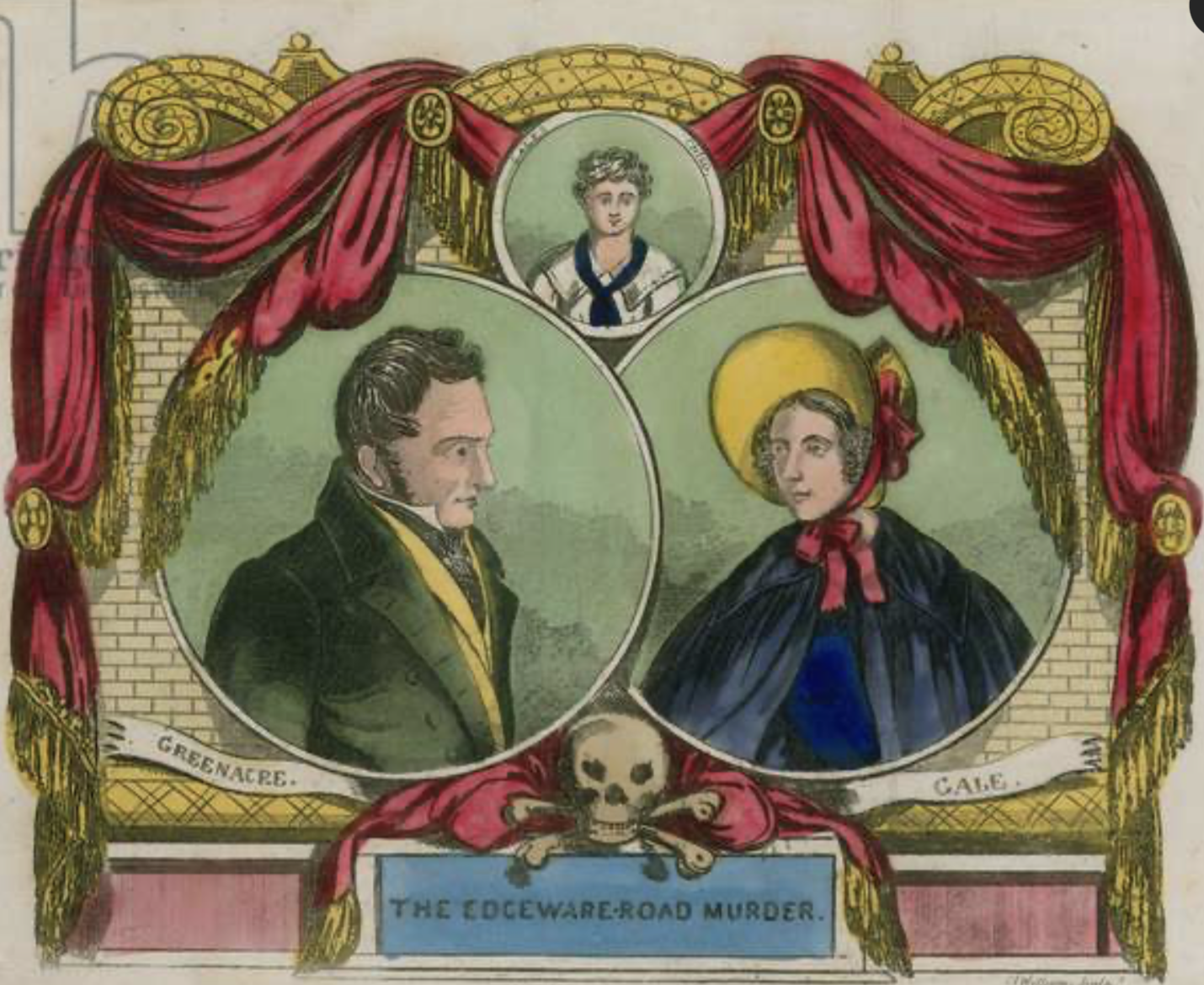by Stephanie Chatfield
Elizabeth Siddal—painter, poet, and Pre-Raphaelite muse—once brushed paths with a murderer, not in the pages of a gothic novel, but in her own childhood neighborhood.
In the winter of 1836, just days after Christmas, London was shaken by a gruesome and unsettling crime. A woman’s torso was discovered, bundled with remnants of a shawl and, eerily, a child’s dress. Days later, the head surfaced, submerged in water—one eye missing, earlobes cut where earrings had been violently removed. In February, the final pieces of the grim puzzle were found: a pair of legs.
Murder is always brutal, but the piecemeal recovery of the victim’s remains, scattered across locations, added an especially macabre air. It gripped the public imagination, stoked fear, and dominated the press.
In March, the victim was identified: Hannah Brown, a woman who was to be married to a man named James Greenacre on Christmas Day. On Christmas Eve, he abruptly announced the wedding was off, claiming there had been a quarrel. Hannah was never seen alive again.
Police investigations quickly unraveled the truth. Greenacre was found in possession of Hannah’s jewelry and a pawnbroker’s ticket for her dresses. More damning still, cloth matching the dress fragment found with her torso was located among the belongings of Sarah Gale, a woman with whom Greenacre was already living. Both were arrested—Greenacre for murder, Gale as an accessory after the fact. After his conviction, Greenacre confessed fully.
But how does Elizabeth Siddal fit into this grim tale?
Decades later, William Michael Rossetti—her brother-in-law—offered a chilling footnote in Dante Gabriel Rossetti: His Family Letters with a Memoir (1895). He revealed that in Siddal’s early childhood, the infamous murderer James Greenacre had been a not only been a grocer in her neighborhood, but he was the landlord who rented 8 Kent Place to the Siddall family.
To the wider world, he was a monster. But to a young Elizabeth, he was simply a friendly neighbor—one who, as Rossetti put it, would “help her toddling steps over a muddy or crowded crossing.”
It’s a strange, unsettling juxtaposition: the image of a little girl crossing a bustling street, aided by the same hands that, years later, would commit an infamous and brutal crime. And yet, it adds another layer to Siddal’s already mythic life—one more thread in the tapestry of Victorian beauty, tragedy, and the uncanny.

More about Elizabeth Siddal

